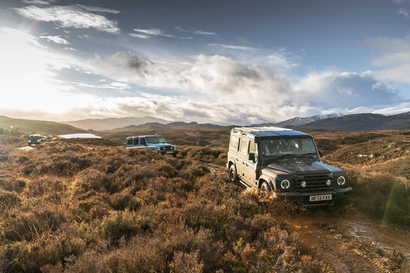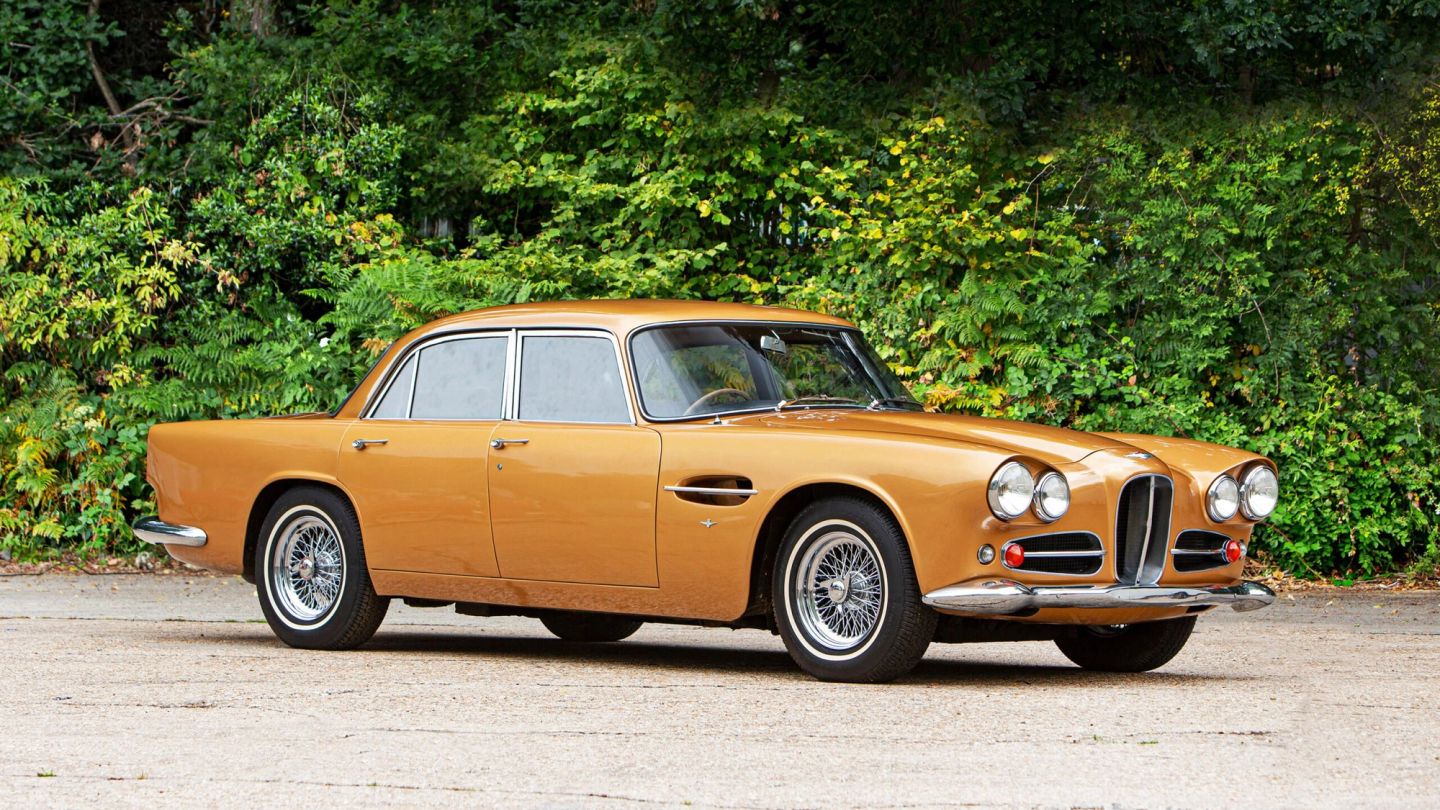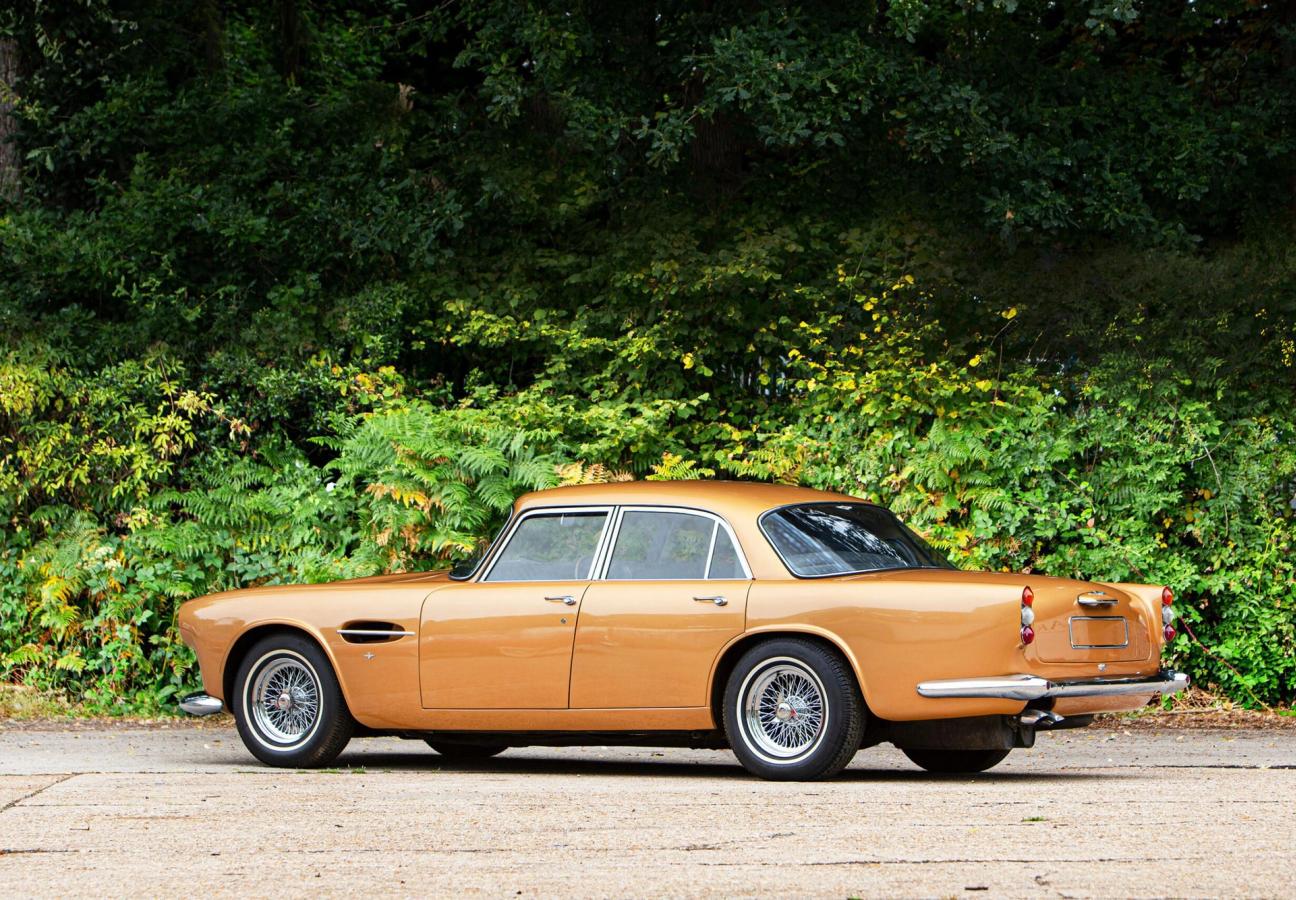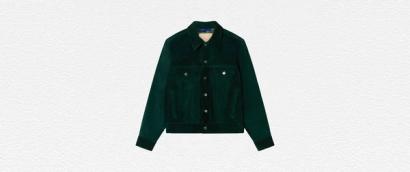

Words: Jonathan Wells
The history of Aston Martin is long and winding; distinguished by detours, super-spies and some of the most handsome motors to ever hit our roads. But so sprawling is this great, twisty history that many of the marques’ most curious cars have fallen through cracks in the asphalt — forgotten even by fanatics, and consigned to the great garage in the sky. This, the 1963 Aston Martin Lagonda Rapide Sports Saloon, is one such car.
In topaz-tinted gold, this particular model will go under the hammer at Bonham’s Bealieu Sale of ‘Motor Cars & Automobilia’ this weekend. Originally sold in 1963, the Rapide was hand-built to order and cost £4,950 (just over £73,000 in today’s money). Just 55 of these cars were produced between 1961 and 1964, and only 48 still survive. The gilded example you see here is one of the finest in existence — and has a story to rival almost any other Aston in history.
It’s a story that begins with Aston Martin’s ‘DB’ series — and the man behind those iconic initials. David Brown bought the British carmaker in 1947, for the princely sum of £20,500. A year later he bought Lagonda, for £52,500. And, during the decade that followed, he helped create a handful of luxury cars for the latter; efforts that ended with the ‘Lagonda 3-Litre’, which ceased production in 1958.
In the same time period, Aston Martin had worked its way through the first four ‘DB’ models. So, in 1961, when Brown decided to breathe new life into Lagonda, he did so using a design platform he’d already developed for the DB4 (itself another criminally overlooked Aston). The name chosen — ‘Rapide’ — was also borrowed; an homage to the Le Mans-winning Lagondas of the mid-1930s.

The car itself was similarly constructed, borrowing components and parts from across Brown’s automotive empire. The four-litre, straight-six engine was in development for the Aston Martin DB5. The ‘De Dion’ tubular suspension built for the Rapide’s rear would find its way into 1967’s DBS. And the dual-circuit, servo-assisted, four-wheel disc brakes were similar to those first seen adorning the front wheels of the DB3.
The Rapide was also fitted with a four-speed manual gearbox, and the factory claimed that its 236 horsepower would take the car from 0-60mph in 7.8 seconds — before speeding on to a top speed of 130mph.
But it was also bigger than an Aston — much bigger. The Rapide stretched almost five metres in length (over half a metre longer than the DB4). Styled by Milanese design maestros Carrozzeria Touring, the rear-end may have resembled the DB4 convertible, but the front took inspiration from elsewhere; adapting a Lagonda grille similar to those once favoured by Ford’s defunct ‘Edsel’ division.
The car was built around a ‘Superleggera’ tubular steel frame, and all exterior body panels were constructed from an aluminium alloy to save weight. Inside, the interior was upholstered in fine Connolly leather and had a burled walnut dashboard to elevate the grand tourer to true luxury status.

Sold without reserve, bidding will begin at £50,000 this weekend, and is expected to reach as much as £80,000. It’s a significant sum, but only slightly above the original cost of the car. So, if you’re after a steal — and a truly idiosyncratic addition to your classic car collection — there are few better bets than this little-known, gold-toned footnote in Aston Martin history.
Want more classics? These are 8 of the best ever American muscle cars…
Become a Gentleman’s Journal member. Find out more here.


